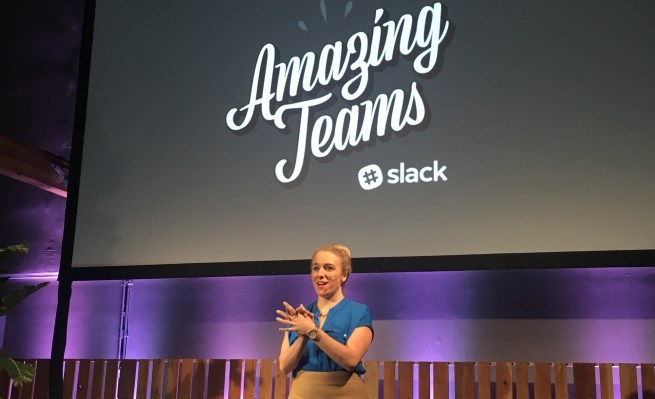Slack is gunning for Skype and Google Hangouts with the 2016 product roadmap it revealed today. The biggest change coming: the ability to seamlessly turn a text chat into a voice or video chat will begin testing “very soon”. This builds on Slack’s January 2015 acquisition of Screenhero, when it said these features would eventually be released.
Slack Calling Is Here – Check Out The Full Article
[Update 3/2/16: Slack was being cheeky when it said voice chat would be coming “very soon”. Today the Slack Calls feature began rolling out on desktop.]
At its customer conference in San Francisco, the company outlined what it plans to do to stay ahead of its workplace chat competitors. It already has 2.3 million daily active users, up from 2 million in December, and wants to give them more options to be productive, collaborative, and transparent.
While that DAU stat might sound low, it’s huge in the enterprise. Considering Slack sees 320 million minutes of active usage per weekday, that breaks down to about 140 minutes of usage per user per weekday.
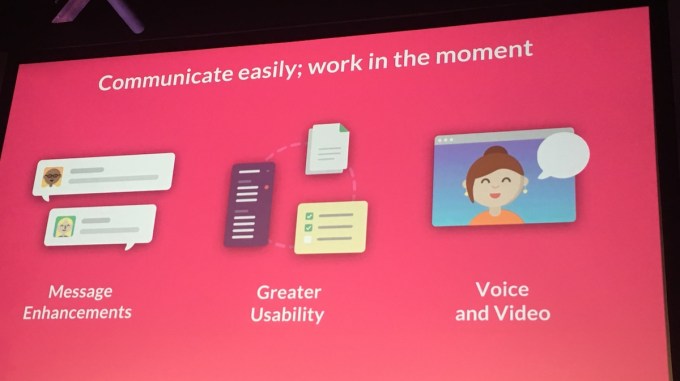
Slack VP of Product April Underwood tells me that voice chat on desktop will come first, and then the company will focus on making it work on all its devices and apps. Video will have to wait until after that. Underwood noted that you can already make voice calls via Skype’s Slack integration. But with its own feature, she says the use case will be “If I’m DMing someone in Slack and we want to switch to have a quick voice conversation, it addresses that problem.”
Slack plans to make a full what-you-see-is-what-you-get formatting tool for messages so you can make sure text looks just right in case a co-worker wants to copy and paste it out. Slack will be improving search operators to make it easier for non-power users to find files and other content.
Shared Channels will become a bigger part of the Slack experience. They could help you communicate across siloed teams at big companies. Eventually, Slack says it also wants to empower organizations to interface with outside parties like marketing agencies and technology vendors. Slack is also improving its billing system so large teams can quickly get started.
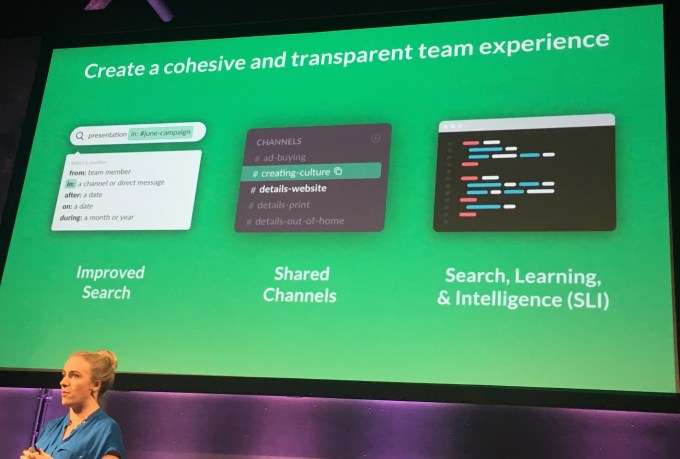
To make it easier for developers to build more powerful experiences atop its platform, Slack is also building out its Search, Learning & Intelligence (SLI) division. Beyond the roadmap, Slack spent the conference highlighting teams like NASA’s Jet Propulsion Lab, Charity:Water, and medical researchers who are using Slack to stay in touch.
Underwood, who Slack promoted to VP of Product in January, opened the day saying she was just going to tell everyone what Slack plans to build rather than being secretive. “We like to be really open and transparent because we want your feedback” says explained.
Underwood followed the announcements by taking questions from the crowd…though that quickly devolved into attendees asking if their dream features would ever get built.
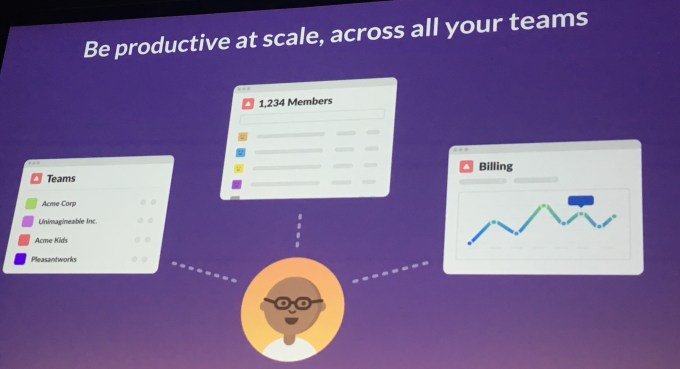
The imminent release of voice and video chat could make offices noisier, but it will certainly make Slack more of a comprehensive communication solution rather than a tool plugged into a suite of other products. That might convince companies Slack is worth paying for.
Given Slack’s focus on making work searchable, it’s easy to imagine that years down the line, Slack could use voice recognition to create transcripts of your voice or video meetings.
A Moat Of Developers
Outside its own product, Slack is fostering an family of third-party apps, integrations, and bots. While others might be able to copy its features, they won’t be able to copy its community, drawn to the network effect of the market leader.’
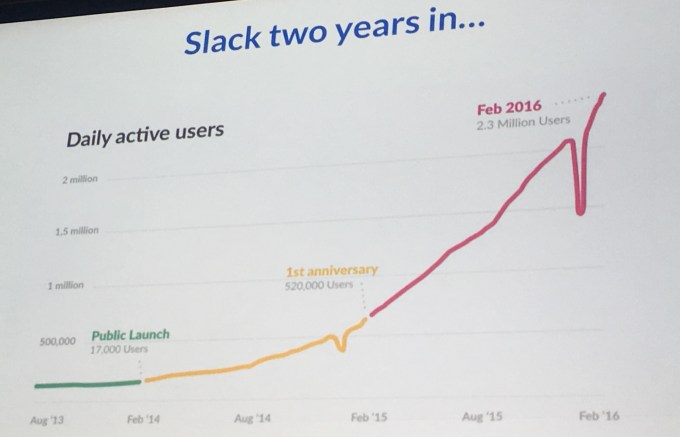
In December, Slack announced it had 2 million daily active users and 570,000 paid seats. It leveraged that momentum to get its A-list investors to compile an $80 million Slack Fund for investing in its developer ecosystem.
If Slack’s strategy pans out, it could pull away from the pack and solidify itself as the next staple of the enterprise. Because everyone needs to communicate, Slack could become ubiquitous enough to serve as a social hub and identity layer for other enterprise apps.
